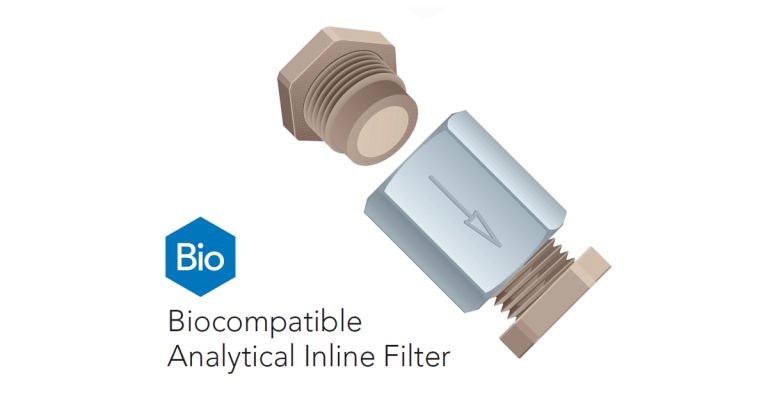

How Long Will Inline Filters Last?
Unfortunately, there is no standard filter lifetime. You may go for months with very clean samples and mobile phases, and not have to change your filters. Or they may only make it a few days. It all depends on how clean your fluids are and on the condition of the seals used in your system.
A good lab practice tip is to make the replacement of your filters or frits a part of your system’s preventative maintenance routine. Typically maintenance occurs every six months to one year. There will be times when you will need to change your filter or frit in addition to the regularly-scheduled changes.

How do you know when it’s time to change your inline filters? Here are a few helpful hints:
If everything on the pump appears to be functioning properly, and if there is no evidence of a leak, then the solvent inlet filter may be clogged, restricting the solvent flow to the pump.
To test this quickly, temporarily remove the solvent inlet filter from the inlet tube and re-run a few standard samples. If the analysis results return to normal, then it’s likely that the pump was not getting enough fluid with the filter in place. Replace the filter with a new one and begin your analyses again. Do not operate for long periods without a solvent inlet filter, as damage to your system may occur. Remember this saying: “If in doubt, throw it out.” Solvent filters are generally inexpensive, making it easier to be safe than sorry!
As your inline filter and pre-column filter do their jobs, the frits inside will collect particles from the fluid pathway. As more particles are collected, less room is available for fluid to move through. Eventually, the pump has to “push harder” to get the same amount of fluid through, causing the system pressure to increase.
To best determine if an inline filter needs maintenance, start at the end of your system and, moving backwards toward the pump, disconnect the fluid pathway fittings one-by-one, monitoring the system pressure. Watch to see if the pressure drops suddenly; if it does, look for the restriction to be in the portion of the flow path last removed from the fluid pathway. If this happens just before a filter, replace the frit inside the filter housing. Remember to be careful and not create a chemical spill when performing this test.
To find more best practices for utilizing and maintaining fittings and fitting accessories, such as inline filters, check out our Fittings 101 Guide.
